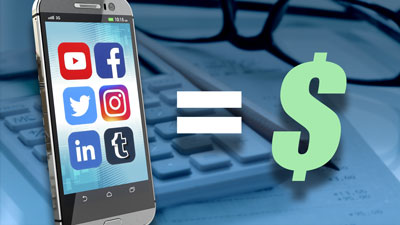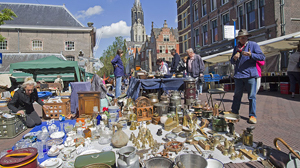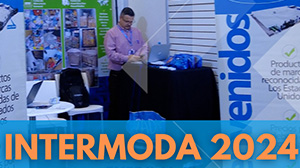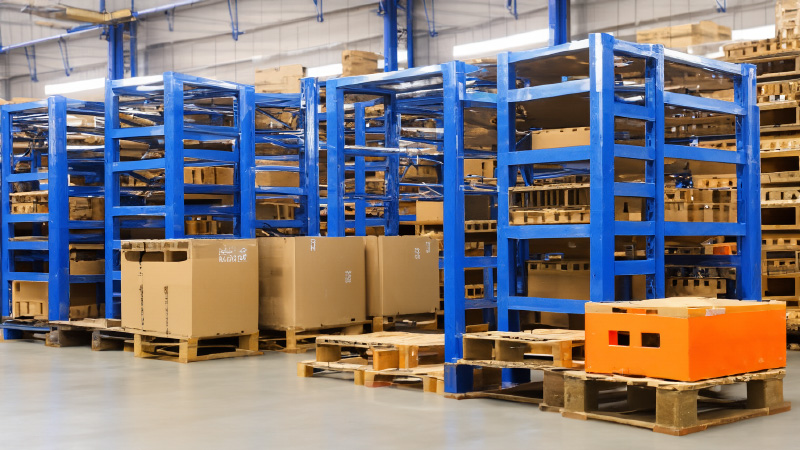Whether you are a flea market and swap meet veteran or just launching your new resale business, there are certain things you can do to ensure you make good choices and create the biggest impact with your flea market booth, thus maximizing your flea market success!
Be Observant and Open to Change
- Observe and take notes: Scout the market you are considering for your booth. Look at the population, the products being sold, the prices items are selling for and make a note of product trends you identify.
- Be strategic with inventory selection: Don’t be afraid to diversify. If you’ve been selling bed sheets and pillows successfully, consider adding towels to your inventory for example.
- Sample new merchandise: While there’s nothing wrong with sticking to what you know works well, place small sample orders with wholesalers to test out different types of products in your market and see if you can build a regular customer base for a new product line.
Source Merchandise Efficiently
If you are just starting out, you may not be very familiar with the different ways in which you can source products for your business. Here are a few starting points:
- Trade Shows: Visit wholesale industry trade shows to meet companies face-to-face, negotiate deals in person and take advantage of a huge scope of products all under one roof. You can typically source everything you need in one visit to a trade show, from several vendors. For a list of closeout industry trade shows, visit the Association of Surplus Dealers online.
- Internet searches: A simple Google search for “wholesale products” or other similar terms will yield a slew of results. When browsing through company websites, make sure to look for wholesalers who own and warehouse their own inventory if possible. In many cases, wholesalers who do not own their own inventory are brokers, or middle-men, and you can often overpay for products versus working directly with the wholesalers who own the products. If possible, choose a wholesaler you can visit in person to inspect the goods prior to making your first purchase until you are comfortable.
- Trade Magazines and B2B Websites: There are many printed sources and wholesale search engines dedicated to helping businesses find product. Some of these publications include: Retailer’s Forum, Swap Meet Magazine, Independent Retailer, Solo Mayoreo (Spanish), Web Wholesaler, Western/Eastern Merchandiser and more. Popular B2B sourcing websites include: TopTen Wholesale, CloseoutCentral and WholesaleCentral. These search engines allow you to enter a search term and find wholesalers nationwide who can provide you with those products.
The Top 5 Selling Categories
According to a study done in 2012 by ProVendor, a vendor association catered to flea market and swap meet vendors, the following are the top 5 selling categories at flea markets across the country. While this is the current trend that is likely to change, keep top selling categories in mind when deciding what types of products to sell and while analyzing whether a particular flea market is the right one for your business.
- Gifts & Novelties
- Fashion Accessories
- Apparel & Footwear
- Knives & Cutlery
- Sporting Goods
Organize your Operations
While in the early days of your business selling as much as you can during each flea market day may be enough, you need to become organized and strategic about your operations in order to grow your business to its full potential.
- Keep track of accounts and customer records: A simple notebook to write down your sales may be enough at first, but it is much easier to keep track of sales and inventory with proper software such as Intuit or Quicken, as well as CRM’s (Customer Relationship Management) softwares. A CRM would allow you to collect your customers’ data (such as email address, phone number or even home address) so you can then market to them outside of flea market opening times.
- Keep inventory records: Make sure you know how much you bought of something, how fast you sold it and what your profitability was. This will allow you to make faster and more educated purchasing decisions down the line, and you’ll be able to pull up sales information for an item quickly and easily.
- Take advantage of technology and tools: If you only accept cash or check payments, consider accepting credit card payments. This will make it easier to close sales with customers who may not be carrying enough money in cash. Consider obtaining a merchant service account with your bank, and take advantage of Smartphone applications for Credit Card processing. iPhones and other Android based phones now have the ability to charge and process credit card payments on the spot without the need for a credit card machine.
Promote!
If the flea market you have chosen for your business has the benefit of high foot traffic, you’re on the right track! However, there is no harm in further advertising and promoting your business to bring even more visitors to your booth.
Consider advertising through:
- Community boards
- Classifieds
- Flyers
- The flea market’s website/vendor listings
- Craigslist
- Couponing websites
Make the Most of Being Onsite
Simply setting up your booth and waiting for customers to walk in isn’t going to drive sales. There are four (and perhaps more!) things you can do to significantly increase your customers’ interaction with you and your booth.
- Be active: Greet your customers as they walk by and invite them in. Don’t just sit at a table reading or going through your phone, as people are much more likely to walk right by you if they are not engaged.
- Know your audience: Know the demographic, and cater to them by placing attractive items to that demographic at the front of your booth. If your flea market caters heavily to teenagers for example, be sure to put items related to that demographic where they can be seen at a glance.
- Attract buyers with your booth environment: If you know that the flea market is frequented during daytime hours by mothers and their children for example, consider having an interactive game (like bobbing for apples) at the entrance to your booth. If the child stops, the mother will stop as well and it will be your opportunity to greet and engage her.
- Be open to dialog: Many people come to flea markets expecting to be able to barter. Be open to bartering and negotiating price with your customers, and know ahead of time the lowest price you would accept for a given item. Be prepared to offer volume discounts when bartering. If a customer is insisting on paying a price you believe is too low, consider selling it to them at that price if they buy multiple units of the item or combine the purchase with other items.
Merchandise Effectively
Your booth setup is very important in attracting customers and driving sales. Consider the following:
- Purposeful and creative displays: If you have items that you aren’t sure how to display, be creative! One flea market vendor we visited had a series of handmade rings displayed inside open egg cartons. Each ring had its spot, and people stopped to admire the creativity of the display, at which point she could engage them to purchase.
- Show Samples: Instead of having items on racks, in boxes or stacked out of reach, create a sample table at the forefront of your booth to show samples of what you have for sale deeper inside your booth.
- Categorize items: It is much easier for shoppers to find items they may be looking for if they are categorized by type, style, color, size or any other applicable metric. It will also make it much easier for you to find an item your customer might ask you for.
- Merchandise for gender: It is known that there are differences in the way men and women shop. If your booth caters primarily to men, make sure your presentation is more direct – everything in a logical, obvious place. Women prefer to browse and dig for treasures, while men typically prefer to find what they need easily, pay and leave.
Sales Promotions
Items may be priced for cheap, but people still love to bargain, and you can use certain types of items to lure customers into your booth prior to or during a negotiation.
- Appreciate the value of “loss leaders”: Consider placing high-demand items that may be low profit for you in a very conspicuous place. An example of a loss leader might be a flat screen TV. You may not have a lot of margin on that item, but it will draw people into your booth where they will see everything else you have for sale. Keep loss leaders in mind when making your wholesale purchases. Just because something is priced a little too high doesn’t mean it is of no value to you. On the contrary, a slightly higher priced item that is in high demand among shoppers might be the key to driving more traffic to your booth.
- Have something for the kids: Consider having balloons, lollipops or something small to give out to kids who shop with their parents. This will keep the kids quiet and entertained so they don’t detract from their parents’ shopping experience, and will also lead them to stop at your booth while walking through the market.
- Cross sell: Consider creating preset volume offers, also called 2-fers and 3-fers. One item costs this much, but if you buy 3, you get a discount! Buyers love this kind of deal and it allows you to move more volume and make room for new product faster.
Demonstrations Sell!
If you are selling any item that requires assembly or that is a bit unusual such as an “As Seen on TV” item, sports equipment or cool kitchen tool, consider demonstrating how it works. People will stop out of interest, and will immediately feel engaged. You can also opt to show a video of how the product works, which can be enticing and informative.
Location, Location, Location
Evaluate the markets you are considering for your booth. The following will help you determine if the location and market will be the best place for you and your product line:
- Visit the flea market as a shopper
- Observe the customer base
- Check the cleanliness and access to the facilities (restrooms, water access, etc.)
- Read the market’s website – do they offer vendor listings or ways for you to advertise your booth?
- Research the area, its economic data and the demographics.
- How long has the market been operating? Speak with vendors to find out how they like it and how they find the foot traffic.
- Does the flea market advertise locally?
- How is the attendance?
- Does the flea market host special events, shows or entertainment of any kind? (Which usually results in increased foot traffic)









